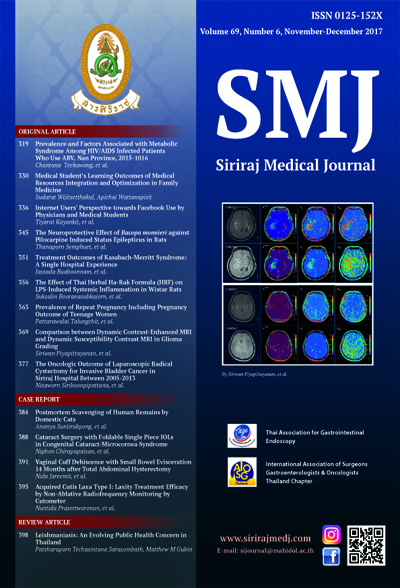Postmortem Scavenging of Human Remains by Domestic Cats
Keywords:
Postmortem scavenging; human remains; human skeleton; domestic catAbstract
Objective: Crime scene investigators, forensic medicine doctors and pathologists, and forensic anthropologists frequently encounter postmortem scavenging of human remains by household pets.
Case presentation: The authors present a case report of a partially skeletonized adult male found dead after more than three months in his apartment in Thailand. The body was in an advanced stage of decomposition with nearly complete skeletonization of the head, neck, hands, and feet. The presence of maggots and necrophagous (“flesh eating”) beetles on the body confirmed that insects had consumed much of the soft tissues. Examination of the hand and foot bones revealed canine tooth puncture marks. Evidence of chewing indicated that one or more of the decedent’s three house cats had fed on the body after death. Recognizing and identifying carnivore and rodent activity on the soft flesh and bones of human remains is important in interpreting and reconstructing postmortem damage. Thorough analysis may help explain why skeletal elements are missing, damaged, or out of anatomical position.
Conclusion: This report presents a multi-disciplinary approach combining forensic anthropology and forensic medicine in examining and interpreting human remains.
Downloads
Published
How to Cite
Issue
Section
License
Authors who publish with this journal agree to the following conditions:
Copyright Transfer
In submitting a manuscript, the authors acknowledge that the work will become the copyrighted property of Siriraj Medical Journal upon publication.
License
Articles are licensed under a Creative Commons Attribution-NonCommercial-NoDerivatives 4.0 International License (CC BY-NC-ND 4.0). This license allows for the sharing of the work for non-commercial purposes with proper attribution to the authors and the journal. However, it does not permit modifications or the creation of derivative works.
Sharing and Access
Authors are encouraged to share their article on their personal or institutional websites and through other non-commercial platforms. Doing so can increase readership and citations.











